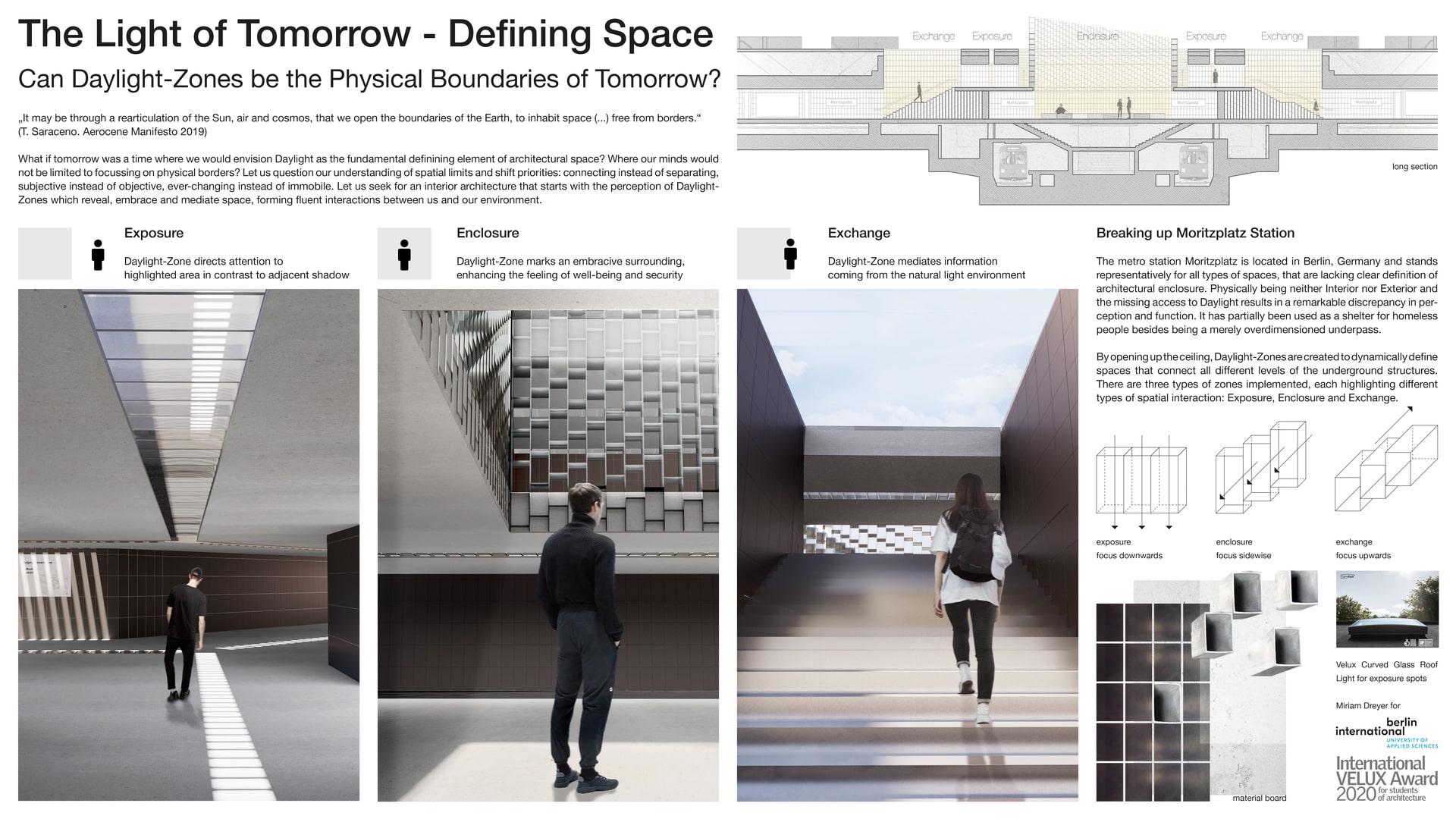Project Description
The Light of Tomorrow - Defining Space Can Daylight-Zones be the Physical Boundaries of Tomorrow? „It may be through a rearticulation of the Sun, air and cosmos, that we open the boundaries of the Earth, to inhabit space (...) free from borders.“ (T. Saraceno. Aerocene Manifesto 2019) What if tomorrow was a time where we would envision daylight as the fundamental defining element of architectural space? Where our minds would not be limited to focusing on physical borders? Let us question our understanding of spatial limits and shift priorities: connecting instead of separating, subjective instead of objective, ever-changing instead of immobile. Let us seek for an interior architecture that starts with the perception of Daylight-Zones which reveal, embrace and mediate space, forming fluent interactions between us and our environment. This project does not propose one single solution but rather aims to question and rethink the way we (re-)cognize, define and structure architectural spaces. It is an invitation to raise one‘s awareness for spatial relations and interactions. Having daylight connecting mind, architecture and the natural environment in the process of visual perception enables us to fundamentally experience spaces in their entirety. Thus, it has formed the basis for the design process. Through its lack of defined architectural enclosure, the metro station Moritzplatz in Berlin, Germany acts as a model for all types of spaces, that may neither be considered interior nor exterior. Most importantly, missing access to daylight results in a remarkable disparity in perception and function. It has partially been used as a shelter for homeless people besides being an oversized underpass. By opening up the ceiling, Daylight-Zones are designed to dynamically define spaces that connect all different levels of the underground structures. The Danish Architect and Lighting Designer Prof. Merete Madsen, PhD, talks about daylighting as a composition of different „light zones“ and „shadow zones“ and further depicts „Daylight-Zones“ that „can be regarded as a space within a space“. (Madsen 2004) Marking spatial peripheries, three types of zones invite us to engage in different interactions with our environment: exposure, enclosure and exchange. While being interrelated, each of these are brought to their utmost potential within their respective zones. Narrow exposure zones enhance a strong focus downwards, dramatically directing the attention to facilities like ticket and vending machines, signs and maps. In order to enhance orientation, the incidence brought about by the Velux Curved Glass Rooflight creates a strong emphasis on both the user‘s activities and the walking ways. A central enclosure zone focuses on the embracing ambience of daylight side wise, supported by a subtle play of light and shadow that enhances atmospheric qualities. With its generous dimensions, the space is used as a waiting area that enhances the feeling of well-being and security through the surrounding incidence of light. Adjacent exchange zones naturally guide the user to strive upwards and connect to the outer environment. Therefore, large windows are created on top of each staircase to enable direct views towards the sky. The aim is to receive all the relevant information one needs for spatial recognition and orientation, such as the position of the sun, the time of day, the season, the location of the site and weather conditions. The Light of Tomorrow - Defining Space empowers daylight to determine interior spaces within the given structures. This shift of priorities answers to the prominent desire to strengthen our relationship with nature in the architectural field. Through exposure, enclosure and exchange, Daylight-Zones encourage us to interact with both our architectural and natural surrounding at the same time, an approach that can be applied to all kinds of spaces holistically.
